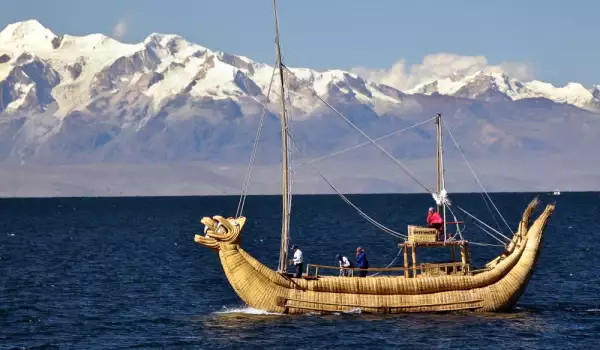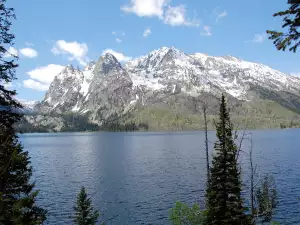Lake Titicaca

Titicaca Lake is the largest mountain lake, which can be seen in South America. Titicaca was formed in the Andes mountain range, they fall within the geographical borders of two countries - Peru and Bolivia. The exact location of this vast water basin is a vast hollow between eastern and western spurs of the Andes. Northwest waters of Lake Titicaca have a Peruvian coast and the southeast reach Bolivia.
Located on 3812m altitude, Lake Titicaca is one of the largest alpine lakes in the world. It’s great water area extends over 8300sq.km. The average measured depth of Titicaca reaches 304m deep. Titicaca is considered the highest navigable lake on our planet. This border water basin is 11 km wide, and the length reaches an impressive 224 km.
Titicaca was once a sacred Inca lake.
Along it’s coast live descendants of the Incas, who to this day keep the age-old traditions in their crafts and folklore. They are the only surviving descendants of the people who built the eternal city of Tiahuanaco, and legend says that in their veins run "black blood". Their main occupation is fishing, as these world people make their fishing boats of reeds, most of them resemble more raft than boats. The indigenous people along Titicaca also feed themselves on the cultivation of vegetable crops.
Besides fishing Titicaca is used for transport and tourism. In Titicaca, the largest island also carries the name of the lake. On the lake sail ships with large displacement. Titicaca is the highest lake, which does not pour into the sea. It runs off into another lake - Poopo, formed along the river Desaguadero. As a result of cold and stormy winds, Lake Titicaca generates large waves. It is often mentioned as a great inland sea.
The high altitude is the reason locals of Titicaca to have different physiological data - they have larger lungs and heart and spleen, compared with people living in lower altitudes.
In Lake Titicaca is a so-called island of the Sun. It is the legendary cradle of the Inca, as it rises in the lake waters with it’s huge size. Even today the island can be seen in stone palaces of emperors, most of whom are buried in ruins. An interesting fact is that the heirs of the Incas near Titicaca use the tails of Tottori, which is a kind of cane for livestock feed, construction of houses and beautiful boats that sail on the surface of the lake.
Water capacity of Titicaca is 827 cubic km, making it the largest lake in Latin America. Because of the enormous depth of nearly 300 meters, water temperature on the surface is kept between 11 and 12 degrees year round. 25 rivers flow into Lake Titicaca, giving 90% of its water reservoir. However, they evaporate, which is why it is much more salty than most other freshwater lakes in the world.
Flora and fauna in Titicaca are varied. In the lake salmon can be fished generously, as well as other typical species, and interesting frog species (Telmatobius suleus- it is almost two feet long and reach weights of 450 grams. Population of this characteristic Titicaca species is 15 million, the frogs never leave the lake).
Global warming leads to threatening Titicaca. Decreased precipitation and increased solar radiation during the last four years have caused a drastic reduction in the level of Lake Titicaca. The last time such a critical minimum water level occurred was in 1949.
As a result, there is a huge threat to vegetation and areas where fish reproduce in Titicaca. According to measurements from April 2009 until now the lake level has dropped by 81 centimeters. If that trend continues and the water level fell by another 30 cm, the negative effects on flora and fauna will be irreparable.















